Church monuments -photographs and descriptions
With many thanks to Jack Deans, who took the photographs, and NADFAS, in whom the copyright is vested. (The photographs of the hidden memorials in the organ loft were taken by the vicar of St Johns Wood church)
George Cherry d 1815
of London and Newtown House, Hampshire was Chairman of the Victualling Board, having been an agent for army victualling in Gambia and Senegal in 1780 and Commissioner for cash account 1785; the experience gained in managing the supply of military food and transport provided the foundation for the great expeditions of the French Revolutionary war and the development of a global network of colonial garrisons during the Napoleonic war.
His youngest daughter Elizabeth married John Gosling [1763 – 1848 ] who was deputy secretary to the Victualling Dept at Somerset House.
Charlotte Stratton
was the daughter of William Stratton who had been born in Madras in 1737 and died on the way to Bombay where he was a Member of the Council in the great storm of 1775 when Charlotte was a baby; her mother Jane outlived them both. They were connected to the Cherrys by family marriages.
Martha
was the widow of George Frederick Cherry, the Hon East India company’s senior judge of the Court of Appeal at Benares.
John Farquhar
was born in 1751 in Aberdeen, and went to India as a cadet in the Bombay Establishment; wounded dangerously, he left the army to be a free merchant in Bengal and in his leisure practised chemical experiments. He was selected by Governor General of Bengal to assist the gunpowder manufacturers and ultimately became sole contractor to the government. He returned to London with a fortune of half a million pounds. On landing at Gravesend, it is said that, to save coach hire, he walked to London, and, requiring a few pounds, his first visit was to his banker. Covered with dust and dirt, with clothes not worth a guinea, he presented himself at the counter, and asked to see Mr Hoare. Believing him to be some poor unimportant personage come to solicit charity, the clerks paid no attention to his request, but allowed him to wait in the cash-office, until Mr Hoare, accidentally passing through it, after some explanation, recognised his Indian customer, a man whom he expected to see with all a nabob’s pomp. Mr Farquhar requested £25, and took his leave . and lived in Portland Square ,Upper Baker Street, in a state of poverty, often being mistaken for a beggar. But he gave princely charitable donations and became a partner in Basset & Farquhar and Co, an agency house in the city. He also had a share in Whitbread’s brewery. In 1822 he purchased Fonthill Abbey for £330,000 from William Beckford (1749 – 1825) and occasionally lived there until the fall of the tower in 1825, shortly after which he sold the estate. His manners were affable and pleasant and he was an accomplished classical scholar and mathematician. When Nash was faced with the bankruptcy of the builder who was building Park Crescent in Regents Park, Farquhar guaranteed the money to finish the work. He did suddenly on 6 July 1826; his wealth amounted to about a million and a half and as he left no will, it was divided among his seven nephews and nieces
Charles Binny (1747 – 1822)
came from Scottish farming stock, his father being a farm manager from Angus. Charles made his money serving the Nawabs of the Carnatic. They were provincial governors of a massive area of South India which included Madras (now Chennai). In 1769, when Charles was about 22 years old, he arrived in Madras to serve as English Secretary to Mohammed Ali Khan Walajah, an anglophile who enjoyed an excellent relationship with the East India Company. He sided with the British against the French to gain control of South India.
Charles worked for the Nawab until the latter’s death in 1795. and then returned to England to become confidential correspondent and London agent to Umdat-ul-Umbrah Bahadur, the son of Mohammed Ali and the last Nawab.However, Umdat’s rule was brief (six years). Because of the enormous debt his father had accumulated, the British had already taken the land surrounding the palace from the Nawab, and in 1801, having turned from traders to imperialists, they sent troops to the palace to remove Umdat himself, and take the palace over.
Binny died a very rich man who could afford not only a handsome commemorative plaque, but also a portrait of himself and his two daughters by Sir Thomas Lawrence – the most fashionable portrait painter of his day.
Lieut Gen George Deare d 1823 aged 71
commanded the Corps of Artillery of the Benghal establishment
Sir William Rawson 1783 – 1827
he was an ophthalmic surgeon Sir William Adams until 1825 when he assumed his wife’s surname
Lieut John Simpson Rawson 63 Reg Bengal
was killed fighting at the Battle of SOBRAON 10 Feb 1846; this was a struggle between the forces of the British East India Co and the Sikh Khalsa Army,[ the army of the Sikh kingdom of the Punjab]. The Sikhs were completely defeated, losing about 10,000 men and making this the decisive battle of the first Anglo-Sikh war.
Lt Col Philip Joshua Perceval [d 10 Sept 1847]
was the son in law of John Robert Parker [d 20 Mar 1842] and Catherine Parker of Harley Street , marrying their daughter Elizabeth. In the Army List he was 2nd Lieut in Royal Marines in 1803, 1st Lieut 1805 Ensign in Grenadier Guards 1811 Captain 1814 and Lieut Colonel 1837
Susannah Maria Flint
The Royal Welch Fusiliers was a regiment of the British Army, part of the Prince of Wales division. . It was founded in 1689 to oppose James 11 and the imminent war with France. The regiment was numbered as the 255h Regiment of Foot, though was one of the first regiment to be granted the honour of a fusilier title and so was known as The Welch Regiment of Fusiliers from1702. The ‘Royal’ accolade was earned fighting in the War of Spanish succession in 1713 .
John Josiah Holford
was the son of Josiah Holford of Hampstead [There was a John Holford living in Holford House, Hampstead in the 1820s and there is a Holford Street off Hampstead Square].
In 1785 he was painted in Lisbon by Thomas Hickey wearing a white shirt, holding a crop with a landscape in the background. In a 1794 Directory he was a merchant at 36 Old Broad Street in the City and a member of the United Company of Merchants of England trading to the East Indies. He was also a governor of Christ’s Hospital .
Kilgwyn, near Newport in Pembroke, had been bequeathed to John Josiah Holford by a relation, Miss Magdalen Price. In his will he left the poor of Kilgwyn interest on £200 in 3% consolidated bank annuities. His son James Price Holford (1791 – 1846) lived in Grosvenor Square and inherited Kilgwyn.
His son Lieutenant Holford
Charles Pieschell
was a trader and merchant in London in the Universal British Directory. [probably of Pieschell and Brogden, Russia Merchants of 11 Sise Lane, Budge Row] . He was naturalised in 1781He lived at Hanover Square in 1820 and 26 New Norfolk street, Park Lane at the time of his death His life was distinguished by a constant display of acts of benevolence and charity, such as establishing an asylum for the education of poor boys and girls in his native city of Magdeburg Among other legacies he left £200 per annum for the benefit of the poor of Brighton
His brother Augustus Frederick Pieschell
late of Wandsworth Common and Ballards in Surrey, was executor to John Leach of Merton Abbey in 1818 – Merton Abbey was a calico manufactury established in 1720 on the River Wandle and Leach had introduced advanced madder
Robert Woodmass was a City of London Insurance Office Keeper, which was the early form of broker working in and around the Royal Exchange from the 17th century – he took a policy round the city in search of wealthy merchants who would pay their share if the ship went down – they signed their names with the amount they were investing at the bottom of the document and were therefore underwriters.
Richard Powell 1766 – 1834
was the son of Joseph Powell, gentleman, of Thame and went to Thame grammar School, Winchester College and Pembroke College Oxford in 1785, but graduated at Merton College Oxford in 1785, becoming B.M in 1792 and D.M. in 1795. He spent time at Edinburgh Royal Infirmary then went to St Bartholomew’s Hospital, and was founder of the Medical and Philosophical society. He published “Observations on the Bile and its diseases” in 1800, being the first English medical writer to demonstrate that gallstones may become fixed in the neck of the gall bladder. 1801 he was elected Physician to Bart’s Hospital. From 1808 to 1825 he was secretary of the commissioners for Madhouses. When retired he lived at York Terrace, Regents Park. His pencil portrait by Henry Bone, after James Lonsdale, is in the National Portrait gallery
Gillespie family
Robert and Agnes Gillespie were buried in the crypt where their three daughters had previously been buried: Elizabeth, Mary Ann and Catherine had all died within fifteen months between February 1832 and May 1833
Richard James Lawrence
was the son of James Lawrence d 1756 of Fairfield plantation who married Mary James, the daughter of the first baby who was born in Jamaica to English parents after it became a colony. Richard married Mary Hall, the daughter of Thomas Hall of Irwin, Jamaica, another plantation owner.
Richard died in London on 8 November 1830, aged 85, Mary having died in 1815. They had 5 sons, James (Sir James) who was a Knight of Malta, George, who made various trips to Jamaica to inspect the property there, Charles of Mossley Hall, Lancs, Henry, a barrister, and Frederick, a Captain and Gentleman of the Privy Chamber to Prince Regent. The sons used much of the compensation money when slavery was abolished to invest in new railways in England.
Jane Farquhar
was the wife of Robert Farquhar of Renfrew, who had inherited his Antiguan and Grenadian estates after the death of his half-brother, John Rae [afterwards Harvey), who had himself acquired them from John Harvey [1721 –79], after Harvey’s nephew, Charles, was drowned in Grenada. Harvey had made a handsome fortune in the West Indies, owning the plantations of Mornefendue, the Plain and Chambord in St Patrick’s parish at the north end of the island. The Farquhar’s daughter, Eliza, married Michael Shaw Stewart, 6th baronet.
Patrick Bartlet [born 1730/31]
owned the Beau Sejour plantation on Carriacou, and in 1792, he was recommended to fill a vacancy in the Council of Grenada, and was described as a principal inhabitant and proprietor. Patrick Bartlet’s slaves in the various censuses were also on Belair and Belvedere. Patrick’s first wife, Isabella, died, in 1821 His second wife, Anne, (whom he married in 1824 at Warnford Surrey when she was about 47, and he was 74 had long standing connections with the West Indies, as she was the daughter of Samuel Span of Bristol, Master of the Society of Merchant Adventurers, and a ship owner. Samuel, with his brother, had arrived on Union Isle, near St Vincent in the West Indies, in 1763, with 165 slaves and soon controlled the whole island, and, also, had property on Carriacou.
Francis Anthony Morris (d 8 December 1842)
was an officer in the 12th Lancers and a benefactor of the town of Malvern. His wife was Sophia, youngest daughter of John Josiah Holford of Kilgwyn.
John Capel (1767 – 1846)
of 96 Cornhill and 32 Russell Square was a stockbroker and M.P. for Queenborough from 1826 – 32. He gave private concerts each year at Russell Square and was a Governor of the Foundling hospital. His wife Eleanor and youngest daughter Sarah are also commemorated.
Jane Arbuthnot (1763 – 1819)
was the daughter of Robert Arbuthnot, Secretary to the Board of Trustees for the improvement of manufactures in Scotland. This organisation sought to build an economy complementary to that of England and originally gave grants to fishing and manufacturing but later turned to Fine Art.
Elizabeth Jane Humby (d 8 September 1847) aged 20
was the wife of Edwin Humby who was a doctor of medicine and became a surgeon in 1841. The three week old baby, named Elizabeth, survived and he had remarried by the census of 1851. He was the doctor that Sir Edwin Landseer consulted. He died at 83 Hamilton Terrace in 1890.
Lieut General Sir John Murray 1768 – 1827 and the Hon Dame Anne Murray d 1848
Murray had a chequered military career, being Quarter Master general in India from 1801-1805 where he “alternated between torpor and feverish activity”. In the Peninsula War at the 2nd Battle of Porto in 1809 he commanded the largest brigade under Wellington and was entrusted with crossing the Douro to cut off the French troops but failed to stop their retreat. In 1811 he succeeded to the baronetcy when his half brother died. In 1813 he took command of an Anglo-Sicilian force at Alicant and defeated Marshal Suchet and the French but did not pursue them. Ordered to capture Tarragon he besieged it until driven into a state of panic by rumours of a French attack and withdrew his force, abandoning 18 heavy siege cannons. He was relieved of command and court martialed but acquitted of all charges except that of abandoning his guns and was admonished. From 1811 – 1818 he was MP for Weymouth.
His wife was Anne Cholmley Phipps, daughter of Lord Mulgrave (who in 1773 had voyaged to the North Pole and brought back first descriptions of a polar bear).
Above the organ and hidden from view from the public are some more memorials. One is to Alexander and Eliza Kyd, and the inscription reads:
To the memory of
Mrs Eliza Kyd,
wife of Lieutenant General Alexander Kyd,
who died on the 22nd of January 1819,
in the 57th year of her age
also to the memory of
Lieutenant General Alexander Kyd
of the Honourable
East India company’s service
chief engineer, Bengal establishment
whose remains are also deposited
in the vault of this chapel
born in North Britain March 1751
died in London 25th November 1826.
Alexander Kyd was a cousin of Robert Kyd, a colonel in the East India Co, who founded the botanical gardens in Calcutta which contributed more useful and ornamental plants to the gardens of the world than any other establishment before or since (Joseph Hooker 1848). Robert bequeathed the famous painting by Zoffany of Captain Cook being murdered in Hawaii to Alexander; it was sold after his death and eventually ended up in the Maritime Museum Greenwich.
Another is:
Sacred
to the memory of
Colonel Patrick Douglas
of the Hon East India Company’s service
who died March 16th 1821 aged 62 years
also of Jane his wife
who died August 20th 1840 aged 78 years
and of
Isabella Douglas
sister to the above
who died October 16th 1840 aged 65 years
There is another Holford memorial hidden away:
Sacred to the memory of
George Charles Holford Esq
youngest son of John Josiah Holford Esq
of York Place Portman Square and of Kilgwyn Carmarthenshire
in the 40th year of his age
beloved and regretted by all who knew him
the enjoyment of every blessing to make this world happy
it pleased the Almighty to afflict him with paralysis
and after three years gradual decline passed in Italy
in the vain hope of restoring health
and six months after his return to England
he expired at his residence Heron Court Richmond Surrey
the 15th of February 1844
also to John his infant son who died Oct 16th 1835
their remains rest in a vault beneath this —-
George Holford (1803 – 1844) had purchased a cornet’s commission in the 6th (or Inniskilling) Dragoons in October 1827 but sold out in January of the following year. In July 1834 he married Harriet Sophia Stevenson, daughter of John Stevenson of Binfield Place, Berkshire, at St George’s Hanover Square, and spent the next ten months travelling on the continent. In 2012 his passport was sold at auction, in the form of a single sheet of paper, dated 15th July 1834, completed in French and signed by Viscount Palmerston as Foreign Secretary, issued to George Charles Holford, Gentilhomme Anglais et Madame son épouse voyageant sur le Continent avec leur Hardis et Bagages, with various stamped entries on the reverse; and a related document, in the form of a booklet, with some sixty pages of stamped entries dated between August 1834 and June 1835; together with a leather-bound book containing Holford’s manuscript account of his honeymoon, during which he and his wife, with her lady’s maid, travelled extensively in France, Switzerland and Italy.
His widow later remarried into the Hatchard family, of Piccadilly bookshop fame.

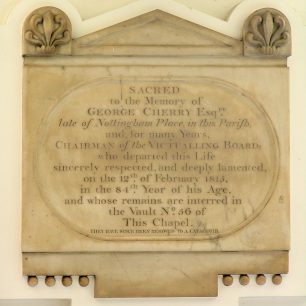
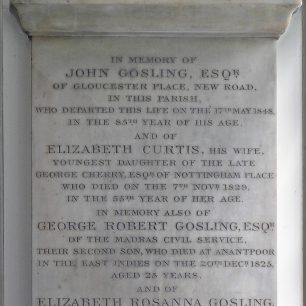
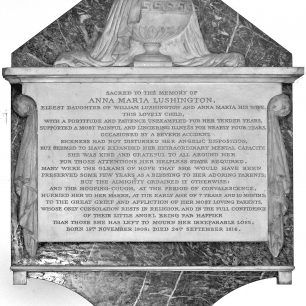
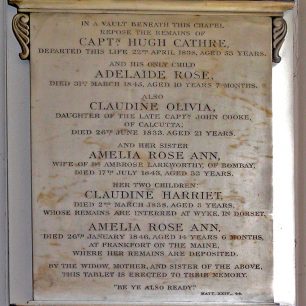
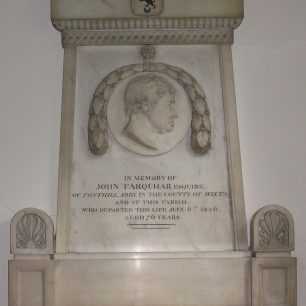
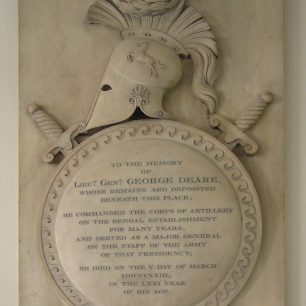
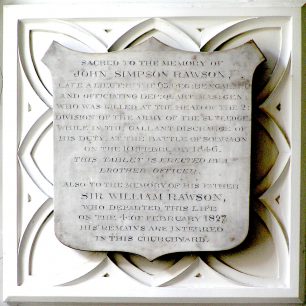
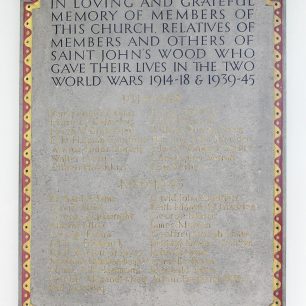
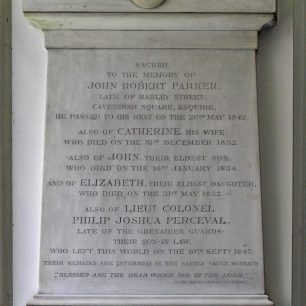
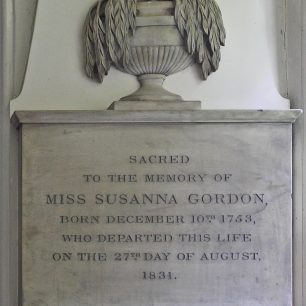
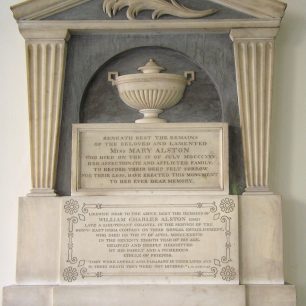
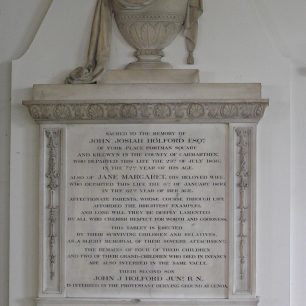
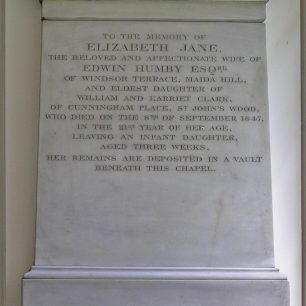
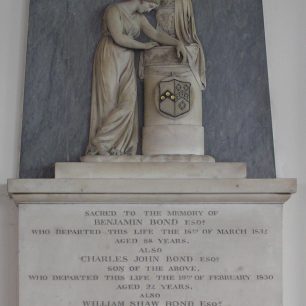
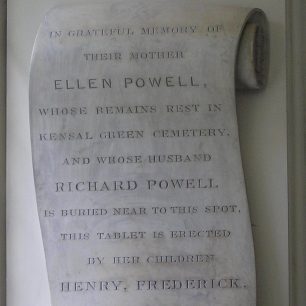
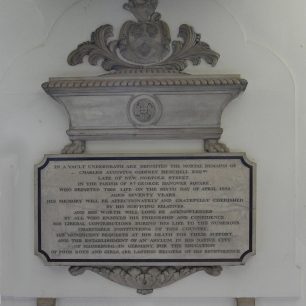
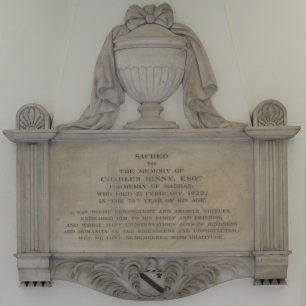
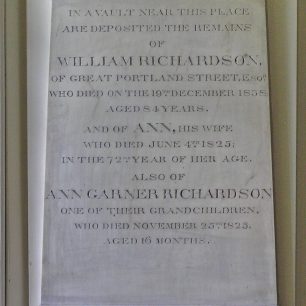
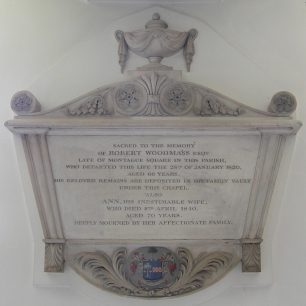
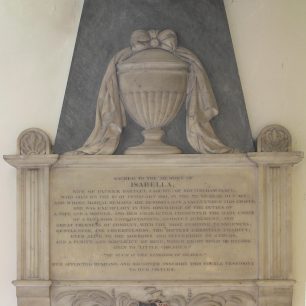
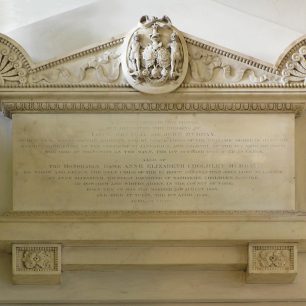
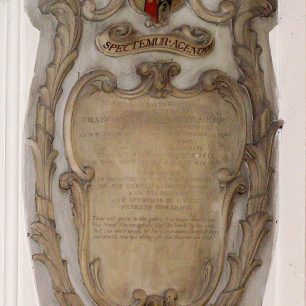
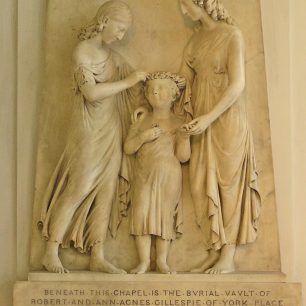
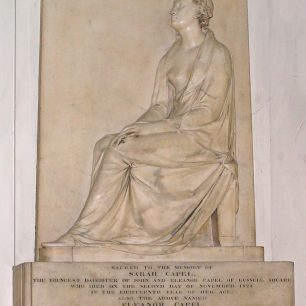

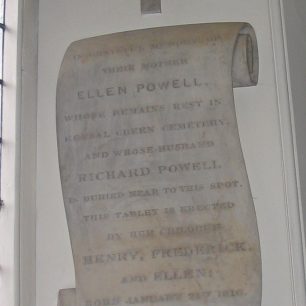
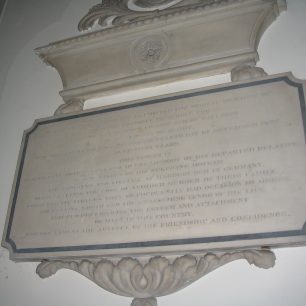
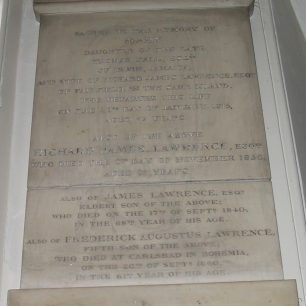
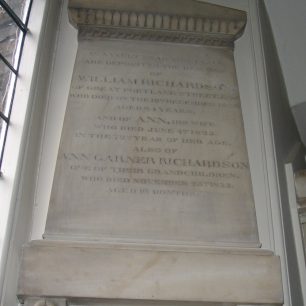
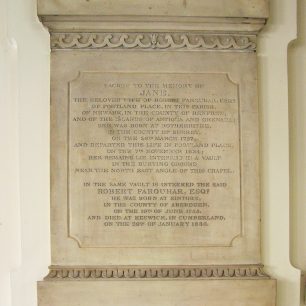
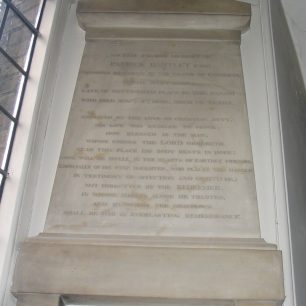
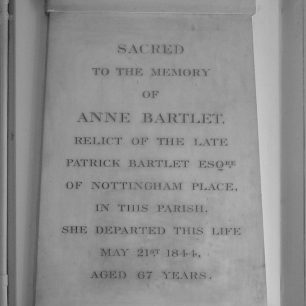
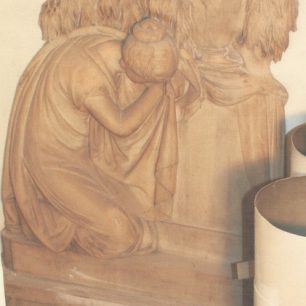
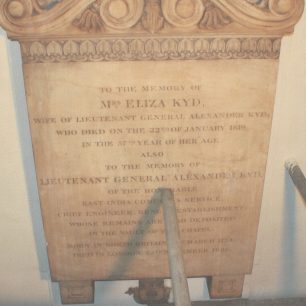
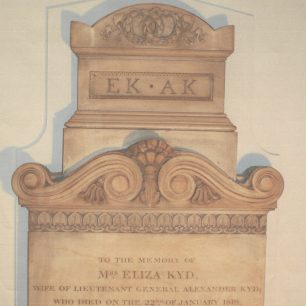
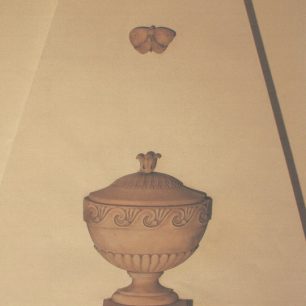
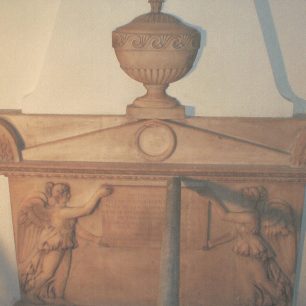



No Comments
Add a comment about this page